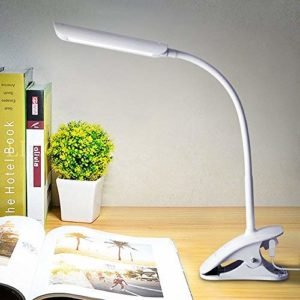A good desk lamp is a crucial element in creating an efficient and comfortable workspace. It not only provides the right amount of light for reading, writing, or working on a computer, but it also plays a significant role in reducing eye strain and fatigue.
However, with so many options available in the market, finding the perfect desk lamp can be overwhelming. In this article, we will guide you through the essential factors to consider when choosing a desk lamp, the different lighting options available, how to determine the ideal size and height, and tips for maintaining and extending the lifespan of your desk lamp.
Why a Good Desk Lamp Is Essential for Your Workspace
Having adequate lighting in your workspace is vital for both productivity and your overall well-being. Insufficient lighting can cause eye strain, headaches, and difficulty in focusing. A good desk lamp illuminates your workspace, allowing you to work comfortably for longer periods without putting excessive strain on your eyes.
Furthermore, a well-lit workspace is essential for tasks that require attention to detail, such as reading, writing, or drawing. Investing in a good desk lamp is a wise decision that can significantly improve your work environment.

Factors to Consider When Choosing the Ideal Desk Lamp
When selecting a desk lamp, several factors need to be taken into consideration. First and foremost, assess your lighting needs. Determine whether you require a lamp with adjustable brightness levels or specific lighting options such as warm or cool light. Secondly, consider the lamp’s energy efficiency, as it will have an impact on your utility bills and environmental footprint.
Additionally, evaluate the lamp’s flexibility and adjustability to ensure it can be positioned and directed according to your specific needs. Finally, take into account the lamp’s durability, warranty, and ease of maintenance to ensure a long-lasting investment.
Understanding Different Lighting Options for Desk Lamps
Desk lamps offer a variety of lighting options to suit different tasks and preferences. The most common types of lighting include incandescent, fluorescent, LED, and halogen. Incandescent lamps produce a warm and cozy light, but they are less energy-efficient and have a shorter lifespan.
Fluorescent lamps are more energy-efficient and have a longer lifespan, but they may produce a colder light. LED lamps are highly energy-efficient, have a long lifespan, and offer a range of color temperatures. Halogen lamps provide bright and focused light, making them ideal for tasks that require high visibility. Understanding these options will help you choose the lighting that best suits your needs.
Selecting the perfect desk lamp may seem like a daunting task, but by considering factors such as lighting needs, energy efficiency, flexibility, and durability, you can make an informed decision.
Understanding the different lighting options available, such as incandescent, fluorescent, LED, and halogen, will aid in choosing the right type of lighting for your workspace.
Additionally, customizing the size and height of your lamp to match your workspace is crucial for optimal comfort and illumination. By following these guidelines and maintaining your desk lamp appropriately, you can create a well-lit and efficient workspace that enhances productivity and reduces eye strain.




